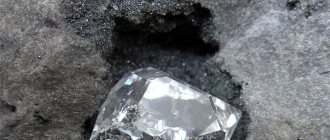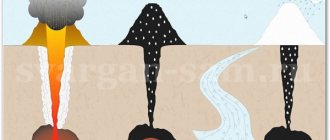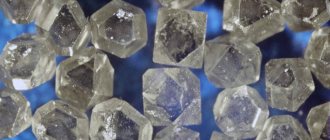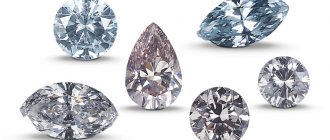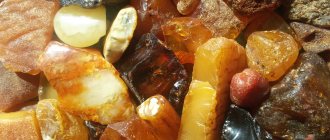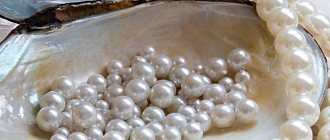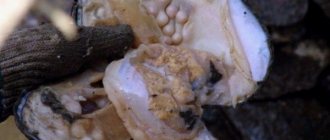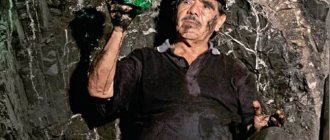There are certain types of materials in Minecraft that are valued more than others. But getting them because of their high value is far from so easy. One of these materials is diamonds, which can only be found extremely deep underground in the world. Therefore, many players have a completely logical question: how can you find diamonds in Minecraft?
The presented guide will help answer this question. This material, which is described below, contains complete information on diamonds, which will allow any novice player to understand all the key details. And thanks to the material, you will learn how to find diamonds in the game Minecraft and the fastest way to do it.
How to quickly find diamonds in Minecraft?
- Searching for abandoned mines. These types of places are located underground and consist of: the beginning of the mine, corridors, intersections and stairs. And by exploring this kind of place, there is a 10.5% chance of finding diamonds inside. The maximum number of diamonds that can be found in abandoned mines is from 1 to 2 units.
- Finding temples in the desert (aka pyramids). It is a natural structure, inside of which there is a cache underground with chests and traps that are activated using pressure plates. There is a 6.3% chance that diamonds (1 to 3 pieces) can be found inside.
- Finding a temple in the jungle. Another natural structure, inside of which there are traps, levers, a secret room and chests. However, here the probability of finding diamonds is higher - it is 15.5%. Although the quantity does not change, so you can also find from 1 to 3 units of diamonds here.
- Finding a fortress. Such a place can only be found thanks to the Eye of the Edge, which shows the location. And the chance of finding diamonds here is 7.4%. The number of possible diamonds found ranges from 1 to 3 pieces.
- Finding Hell's Fortress. This, in turn, is a natural structure, which is located on the territory of the “Lower World”. The probability of finding diamonds here is 19.2% (almost the highest chance among all structures). The quantity is from 1 to 3 pieces.
- Finding a forge in a peaceful village. Alternatively, you can try to find a forge in one of the villages. Because the probability of finding diamonds inside a forge chest is 16.3%. Quantity – from 1 to 3 pieces.
- Search for the city of Krai. And the last place where you can find diamonds is a kind of castle on the territory of the outer islands of the world “Edge”. The probability of finding diamonds in such a place is the highest - 21.5%. And the quantity is quite large - from 2 to 7 pieces.
- Griefing and trading. These are the last two ways in which you can find diamonds. And all of them are exclusively server-based. In the first case, you can get diamonds by griefing, that is, you can try to steal or destroy another player’s house in order to take the property. In the second case, you can trade with players, offering certain items in exchange for diamonds.
Kimberlite pipes
The history of their production in Africa begins in 1866. In February of this year, fifteen-year-old Erasmus Jacobs found a transparent rock on a plot of land owned by his father, located near the Orange River. Over the next few years, large quantities of diamonds were mined in Africa, exceeding those found in India in two millennia. The first diamond deposits to be discovered in Africa were located far from streams and rivers. They were located in sandy soil, the so-called yellow earth, and in hard rock, which was called blue earth. Later it began to be called kimberlite, since the deposit was located near the city of Kimberley. Diamond deposits began to be called kimberlite pipes. A real diamond rush broke out.
Hacker ways to find diamonds in Minecraft
- Using cheats. Alternatively, you can use Xray - this is a special cheat mod that allows you to see through other blocks. Only on public servers this opportunity (to install such mods) is suppressed by administrators. However, this mod can easily be used in a single player game.
- Duplication of resources due to bugs. This method is more difficult to implement, since it requires finding some bugs, errors and other server problems that allow you to clone diamonds through some functions like trading. And, as a rule, dupes differ from each other, so it is quite difficult to find a working one (they are often trying to fix them as soon as possible, since the economy is breaking down), but they exist.
Tips for Finding Diamonds
- Be sure to check the surrounding blocks first. If you don't, you may be surprised by the lava flow and lose your treasure or, worse, your life.
- Always take plenty of torches with you. Finding resources in Minecraft is a dark job and takes a lot of torches
- Lava does not guarantee the presence of diamonds. Many players associate lava with finding rare ore, but this is not true. Since lava is most often found in the same location as diamonds, overlap is common.
views: 350
How to get through creative mode using command?
If you don’t want to waste time on any of the above methods, but you are playing in a single player game, then you can use a special command. The complete instructions are as follows:
- Open the chat using the English key “T”;
- Enter the command in the line - “/give @p minecraft:diamond_ore”;
- Press the Enter key.
Moreover, if the command does not fit, then we recommend using a command block (this is a special block that automatically activates the commands written in it). In addition, you can use the “Space” to enter the number of diamonds you want the character to receive. For example, the command might look like this: “/give @p minecraft:diamond_ore 64” (as a result, the character will receive a stack of diamonds).
The first diamond jewelry
One of the first pieces of jewelry using diamonds was the crown of King Stephen of Hungary. This was in the year 1000. But these crystals began to be polished later in Venice. Then the Parisian master Bruges brought this method of processing to France. At the end of the 15th century, the polishing wheel was invented. The first diamond ring was given to Mary of Burgundy. It was presented to her by Maximilian of Austria in 1477. This is how the tradition of giving the bride a diamond ring during her wedding arose.
How to test a diamond at home
Certification of precious stones in the Russian Federation is not mandatory and is carried out solely at the request of the jewelry manufacturer, seller or buyer.
The finished jewelry product, be it earrings, rings or other jewelry, must necessarily have a label-tag, which, in accordance with the industry standard, lists, in addition to the characteristics of the product as a whole, a description of the insert. For diamonds it is:
- number of stones with the same characteristics;
- type of cut in the form of an industry-accepted cipher;
- total weight of inserts in carats;
- mineral color group;
- cleanliness class;
- the quality of the cut and its compliance with the standard.
If for some reason the product label cannot be used as a guarantee of authenticity, methods will come to the rescue that allow you to reliably solve the question of how to identify a diamond at home.
Shine
Studying the shade of shine of the faces is used as one of the methods for checking the origin of a stone at home:
- a natural cut diamond shines on all sides equally, and not just on top;
- if the edges are reflected in shades of gray, then the mineral is genuine;
- if a stone plays with all the colors of the rainbow, then it is most likely moissanite.
One common jeweler's trick is to set moissanite in a blind setting, which smoothes out the wild shine and helps it look more like a diamond in a ring or earrings.
Comparison
Determining the purity of the mineral will also help resolve the issue of how to distinguish a diamond from fakes and imitations. Natural stones, even of exceptional purity, have minor inclusions and cracks inside them. Samples of an absolutely pure breed are extremely rare and are very expensive. It is impossible to create such defects in synthetic diamonds, so they are always of impeccable purity.
A magnifying glass with 10x magnification will show such natural imperfections.
Fake rock crystal can be seen with the naked eye: purity is a rare quality for this mineral, it is characterized by a “gassed” effect - an abundance of tiny inclusions, specimens with high transparency are extremely rare.
Distortion
The most original home way to solve the question of how to identify a real diamond is to check the optical properties:
- if you put a natural cut diamond on a sheet with printed text, a line or even a dot, then you will not be able to see these signs through it - it refracts light so sharply;
- through cubic zirconia and rock crystal you can easily see everything written or drawn;
- In moissanite, the optical properties directly depend on the quality and polishing of the girdle - the image may appear in two.
Girdle
The girdle is the boundary separating the top and bottom of the stone—the crown and the pavilion. The girdle of a natural cut diamond is matte and rough. A smooth and transparent border indicates a fake.
Frame
If you need to decide how to identify a diamond in a ring at home, then the design features of the frame will help you verify its naturalness. According to unwritten rules, natural diamonds are placed only in a frame made of the highest standard gold or platinum. The design features of the setting also help determine the origin of the stone - jewelers do not hide the lower edges of a natural diamond with the setting.
Ultraviolet
Ultraviolet light can be used to determine authenticity not only in laboratory conditions, but also at home; for this you need an ultraviolet lamp or banknote detector.
Real diamonds give a blue glow when exposed to ultraviolet light, while artificial stones and imitations will glow with blue, green or yellow hues.
Water
There is an opinion that it is impossible to see a cut diamond immersed in water. This statement is not entirely true: it will not give reflections in water, but if you turn the container, you will be able to see the cut. Moissanite and cubic zirconia, immersed in water, on the contrary, will cast colored highlights.
The second way to solve the question of how to check a diamond with water: touch the surface of the edges with a sharp, wet object - a wet toothpick or a needle. If the stone is real, then the drop will not spread.
Breath
A popular way to solve the question of how to check the authenticity of a diamond at home if it is in a frame is to breathe on the stone. The surface of a natural mineral does not fog up from breathing, but cubic zirconia, synthetic moissanite and zircon fog up for a while. If you take several exhalations on synthetic stones, condensation will begin to form on the surface.
Scratches
Diamond hardness and resistance to damage are one of the main distinguishing features. A simple test with a home nail file will help you differentiate a cut diamond from other stones.
Only moissanite can resist scratches and cuts, but there are ultraviolet and other methods to eliminate suspicion about it.
Several easy-to-follow methods will help you independently distinguish a diamond from a fake at home. But only a professional gemologist can adequately guarantee the authenticity of the stone.
Major finds
In the early years this mine produced many large diamonds, one of them being the Cullinan, discovered in 1905. After 45 of the last century, several more very valuable and rare stones were mined from the mine. The most memorable moment in the mine's work was the discovery of a diamond measuring 51-25-19 millimeters. The surprise was that it was only discovered at the factory in layers of lubricant. He was given the name "Niarchos". It is 426.5 carats. In South Africa, you can visit the museum and learn more about the history of famous African diamonds.
Tough competition
In the 1870s and 80s Kimberley was a mining town. There were a large number of diamond mines located around it. They produced about 95 percent of the world's diamonds. There was fierce competition among the earners, especially Cecil John Rhodes and Barney Barnato, English immigrants, competing with each other. They became the first owners of consolidated holdings and mining companies. In 1902 the Transvaal Mining Company was established and operated until the First World War. When it began, the mine closed and the company continued to operate only partially. In 1916, the mine began to work again, but in 1932 diamond mining was stopped again. The diamond industry was also dying out. At the beginning of the last century, diamond deposits were also discovered in Congo and Namibia.
Diamonds began to be mined at the mine again only in 1945. This was her third, her third life. And the fourth began in 1979, when they managed to break through the waste rock with the help of a special pipe. After this, the mine served for another 15 years. This was the longest period of her service.
The natural way
Diamonds are mined from “diamond” ore. This is if we talk about the standard method (but there is also an industrial, artificial one that gives endless supplies). The ore is located underground in Minecraft, at levels 1-16. The most popular levels are from 8-13. Well, the most “diamond” level is level 12. This is where the main diamond deposits are located. This is the most logical place to look for them. The local ore, if you're lucky, can give you 10 diamonds at a time. The ore is often found directly under lava. By the way, this is a serious reason not to dig under yourself - you can easily “swim”. Pecking at yourself in Minecraft is no less dangerous. The ore that you find under the lava will give you its diamonds if you pour the molten rock into a hole dug nearby with a bucket.
Ore will not give up its treasures so easily. Only a diamond pickaxe, and even an iron pickaxe, are capable of extracting the desired mineral in Minecraft. Before you dig in, you need to prepare. Here's the minimum you need to take with you:
- Pick.
- A bunch of torches.
- Sword. To defend against mobs, you need to make a sword. A sword is like a knife in the kitchen.
- Then, when you have already scouted, drag the chest underground. Why constantly rise if you can put a chest next to it and, once again, the diamond is already there. Like the sword, the chest is an indispensable thing in Minecraft.
- Stove. An extremely useful item, just like the chest and sword. By the way, the mined diamond can be given to the defense industry - the diamond sword is cooler than others. Once again, by the way, if you make a double chest, it will be an incentive to mine more cool blocks like diamond.
An approximate algorithm: dig in Minecraft in the expected location, if you can find it, quickly work with a pickaxe, the ore is smelted into a diamond, put it in the chest, and continue.
How is a diamond different from a diamond?
Many people confuse these two words, but they are what distinguish the mined mineral from the finished piece of jewelry. The moment a mineral is in the ground, in the back of a mining truck, or in a warehouse awaiting cutting, it is a diamond. Once it is processed, it becomes a diamond.
Few people know, but diamonds can be broken if you hit them very hard. They split into pieces along planes parallel to the faces of a regular octahedron. This is exactly the structure it has. Roughly speaking, it is splitting “at the seams.”
The word diamond translated from French “brilliant” means “brilliant”. This is exactly what it becomes after processing, and the processing itself involves applying 57 or 58 facets to the surface of the stone. They refract light and give the stone that very radiance for which it is so valued.
On the left is a diamond, on the right is a diamond. There is a difference, right?
About 75 percent of diamonds sold in the world are classically cut. This form consists of the following elements:
- Crown (top)
- Girdle (widest part)
- Pavilion (lower part)
Despite the fact that the diamond itself will be beautiful even with cutting defects, and only a specialist can recognize the defect, a special technique is used here. Craftsmen have been studying how to cut diamonds correctly for many years, and they must observe the cut proportions as correctly as possible.
If the cut is made other than the classic or fancy shape, it is divided into two types. Without going into detail, this is a shape closer to round or, conversely, closer to an elongated shape.
Diamond mining sites
Countries that have a lot of diamonds are very disparate in their level of economic development, social sphere, religion, and so on. However, they were lucky to be in the very places where diamond mining really makes sense.
Countries where diamonds are mined
- Russia - 40.32 million carats per year
- Congo - 23.20 million carats per year
- Botswana - 20.50 million carats per year
- Australia - 13.96 million carats per year
- Canada - 13.3 million carats per year
- Angola - 8.7 million carats per year
- South Africa - 8.3 million carats per year
Where are diamonds mined in Russia?
- Yakutia
- Arhangelsk region
- Murmansk region
- Karelia
- Perm region


